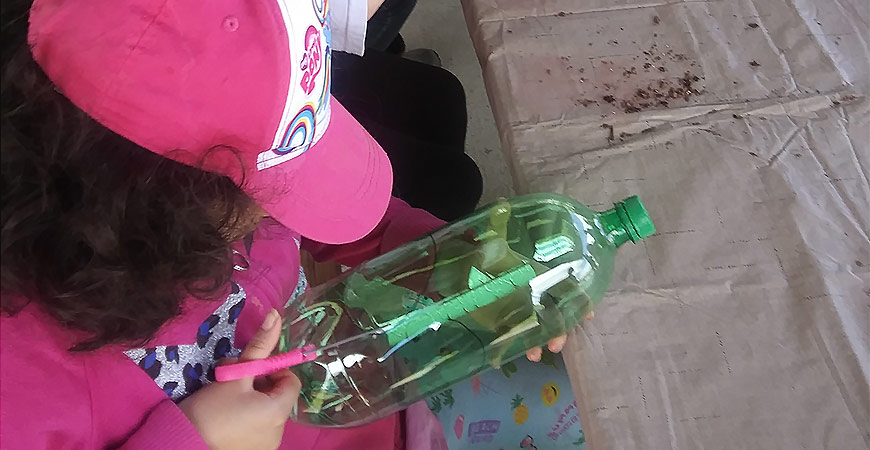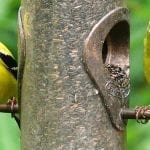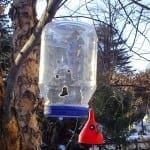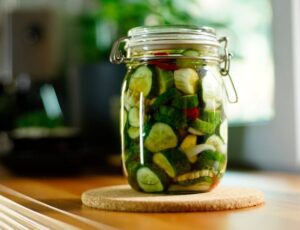
How To Pick the Best Birdhouse for Your Backyard
For nature lovers, there is nothing more rewarding than setting up a birdhouse and watching a mated pair of your favorite birds move in and build a nest. Several types of backyard and garden birds choose to make their home in birdhouses.
See these DIY birdhouse ideas to entice your favorite birds to nest near your home. And have fun watching the action of each bird!
What do I need to know to attract a certain type of bird to my birdhouse?
If you wish to attract a certain bird species, creating or buying a birdhouse designed to accommodate your favorite bird is best. In general, the box size, the inside dimensions, and the entrance hole determine the type of bird that will move in, roost, or build a nest.
Birdhouses are usually crafted square or rectangular with a round entrance hole. Attach a section of wood dowel or a small metal bracket below the entrance to create a perch for landing and exiting.
Listed below are eight bird types and the types of the house each bird prefers.
Black-capped Chickadees, Wrens, and Tree Swallows
The entrance or hole size is important for tree swallows, wrens, and chickadees. The diameter of the hole should be 1 1/4 inches, big enough for your favorite bird but small enough to deter bothersome house sparrows.
Place the birdhouse from 3 to 10 feet high. Attach the house to a tree or a pole adjacent to natural covers such as a tall shrub or tree.
Purple Martins
Purple martins live and nest in North and Central America and fly south to spend the winter in South America. The best birdhouses for this bird are usually round and multi-story, as they prefer to nest in large groups.
An easy and inexpensive way to attract purple martins is to gather several dried gourds, cut entrance holes, and hang them in a bunch. Install your purple martin birdhouse at the height of 10 to 15 feet and a minimum of 40 feet away from buildings or trees.
Bluebirds
Bluebirds aren’t fussy about their homes. A small entrance hole and a large roof overhead are all they require.
House sparrows and other small birds often take over bluebird nesting boxes. The population of bluebirds has declined in recent years, so it’s a good idea to install a predator baffle below pole-mounted houses.
They prefer a home placed 4 to 6 feet above the ground and in a sunny location. If you plan to build a birdhouse for bluebirds, check the North American Bluebird Society website for the proper dimensions.
Robins, Barn Swallows, and Phoebes
If you like to watch robins, barn swallows, or phoebes, a birdhouse isn’t required as they prefer to nest on a ledge, shelf, or platform. Use a square piece of plywood to build a platform floor.
Add a narrow border around the edge and a sturdy back piece to attach it under an eave or porch railing. A platform will attract blue jays, mourning doves, and cardinals, too.
Easy DIY Birdhouses
Get your kids involved in bird watching with these easy DIY birdhouses. You may already have some of these crafted items around your home.

Upcycled Milk Carton/Pop Bottle Birdhouse
Don’t pitch your empty milk carton or a pop bottle just yet! Instead, turn it into a DIY birdhouse craft for you and the kiddos.
You’ll need a milk carton/pop bottle, scissors or craft knife, string, hot glue gun, and decorative materials such as paints and paintbrushes to create these houses.
- Clean and dry the carton/bottle. Be sure to keep the cap to prevent rainwater from entering it.
- Paint a base coat and let it dry.
- Trace a circle and use your scissor or craft knife to cut out the door. Be sure to leave some room from the door to the base of the carton for a perch.
- On the bottom of the carton/bottle, poke several holes to allow drainage.
- Now, it’s time to paint that fun pattern you had in mind! You can go with stripes, polka dots, or a paint splatter effect.
- Once painted, create a small cut below the entry and insert a perch. This could be a stick from the yard or a popsicle stick. Then, use waterproof glue (Titebond, Gorilla Glue, etc.) around the area surrounding the perch to attach it to the surface.
- Next, on the top of the carton, poke a hole on each side and run the string through. Tie a knot or two to ensure it stays tied.
- Optional- spray a waterproofing sealer to make your birdhouse withstand the elements better.
- Finally, fill your birdhouse with wild bird food seeds and hang your birdhouse on a sturdy branch.
Before you know it, birds will live in the houses and begin nesting in your garden.
Photo Courtesy of Virginia State Parks
Craft a Birdhouse with a Kit
If you enjoy putting together kits, this birdhouse kit from Woodlink is a great project to do with kids. Woodlink kits are designed to meet the specific needs of nesting birds. The kit comes with everything you need to build a birdhouse.
Painting your finished birdhouse – Paint only the exterior. Use weather-resistant paint in a neutral color like grey, green, brown, or cream.
Learn more at Birdhousesupply.com.
Where should I place my birdhouse?
Backyard birds can be picky about where their nesting box is located. You’ll have better luck attracting your favorite pair to their new home with the right birdhouse placement.
Approximately 36 species of North American birds prefer to nest in ‘cavities’ and are attracted to birdhouses. Whereas other birds prefer to nest in shrubs, trees, or ledges.
Moreover, a properly mounted birdhouse is important for bird safety, as it will deter predators.
Mounting your birdhouse on a metal pole will make it difficult for predators to gain access compared to mounting the home to a tree or wooden pole. If you choose to use a wood post, then add a baffle or guard below the birdhouse.
The mounting height will vary by each bird species:
- Chickadees and titmice – 4 to 8 feet high
- Bluebirds, house wrens, tree swallows, and nuthatches – 5 to 10 feet high
- Purple martins – 15 feet high
- Woodpeckers – 8 to 20 feet high
Face the entrance away from prevailing winds to protect birds and hatchlings from the weather. If you plan to set up the birdhouse near a managed lawn, do not place it where pesticides are used. It may harm the birds, and the chemicals will deplete their main source of food – insects.
Adding a birdbath or fountain to your garden will provide a welcome source of drinking water.
Did you know? Backyard birds prefer their own space while breeding and nesting. An average size garden usually accommodates one or two bird pairs.












